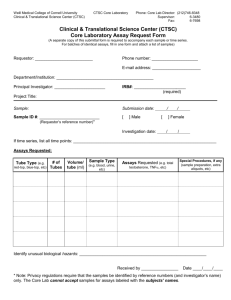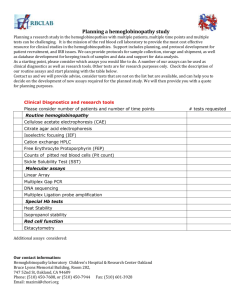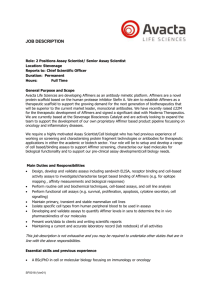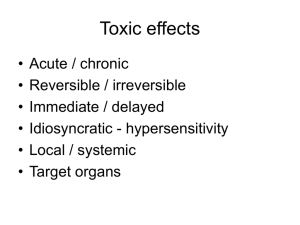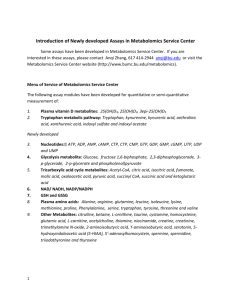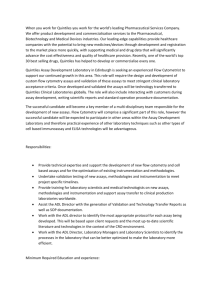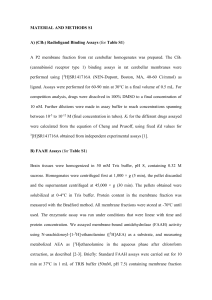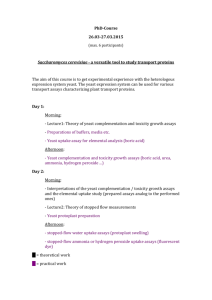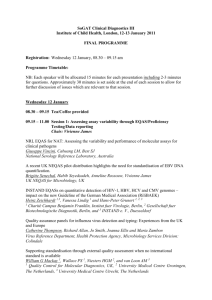Title of Superfund: Biomarkers of exposure to hazardous substances
advertisement
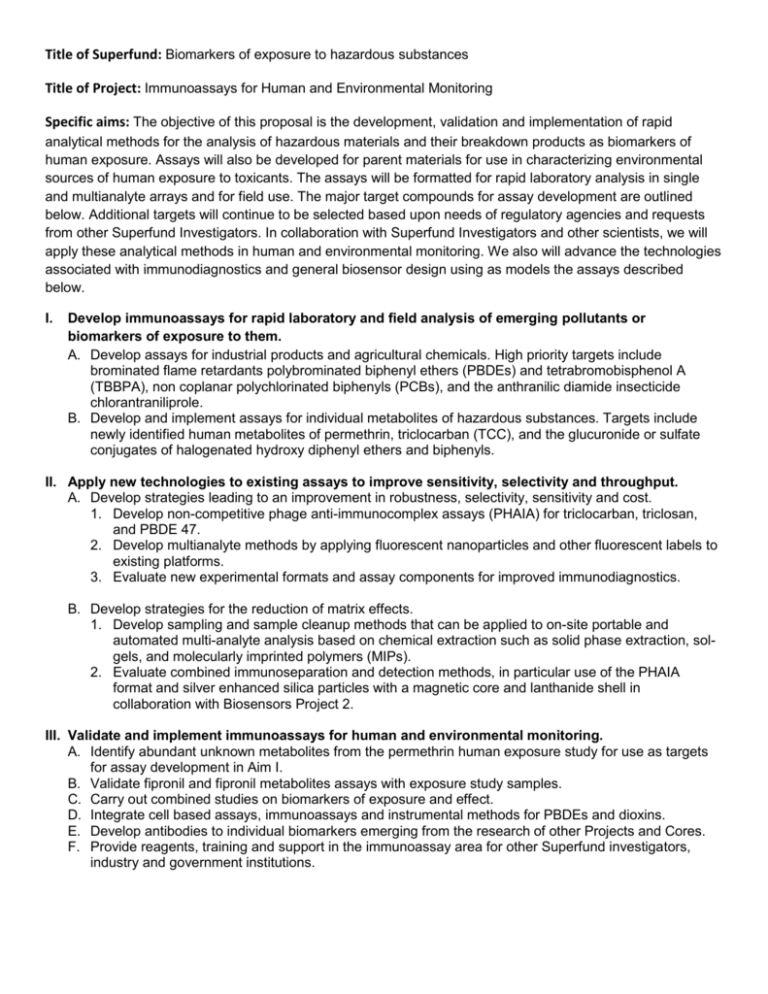
Title of Superfund: Biomarkers of exposure to hazardous substances Title of Project: Immunoassays for Human and Environmental Monitoring Specific aims: The objective of this proposal is the development, validation and implementation of rapid analytical methods for the analysis of hazardous materials and their breakdown products as biomarkers of human exposure. Assays will also be developed for parent materials for use in characterizing environmental sources of human exposure to toxicants. The assays will be formatted for rapid laboratory analysis in single and multianalyte arrays and for field use. The major target compounds for assay development are outlined below. Additional targets will continue to be selected based upon needs of regulatory agencies and requests from other Superfund Investigators. In collaboration with Superfund Investigators and other scientists, we will apply these analytical methods in human and environmental monitoring. We also will advance the technologies associated with immunodiagnostics and general biosensor design using as models the assays described below. I. Develop immunoassays for rapid laboratory and field analysis of emerging pollutants or biomarkers of exposure to them. A. Develop assays for industrial products and agricultural chemicals. High priority targets include brominated flame retardants polybrominated biphenyl ethers (PBDEs) and tetrabromobisphenol A (TBBPA), non coplanar polychlorinated biphenyls (PCBs), and the anthranilic diamide insecticide chlorantraniliprole. B. Develop and implement assays for individual metabolites of hazardous substances. Targets include newly identified human metabolites of permethrin, triclocarban (TCC), and the glucuronide or sulfate conjugates of halogenated hydroxy diphenyl ethers and biphenyls. II. Apply new technologies to existing assays to improve sensitivity, selectivity and throughput. A. Develop strategies leading to an improvement in robustness, selectivity, sensitivity and cost. 1. Develop non-competitive phage anti-immunocomplex assays (PHAIA) for triclocarban, triclosan, and PBDE 47. 2. Develop multianalyte methods by applying fluorescent nanoparticles and other fluorescent labels to existing platforms. 3. Evaluate new experimental formats and assay components for improved immunodiagnostics. B. Develop strategies for the reduction of matrix effects. 1. Develop sampling and sample cleanup methods that can be applied to on-site portable and automated multi-analyte analysis based on chemical extraction such as solid phase extraction, solgels, and molecularly imprinted polymers (MIPs). 2. Evaluate combined immunoseparation and detection methods, in particular use of the PHAIA format and silver enhanced silica particles with a magnetic core and lanthanide shell in collaboration with Biosensors Project 2. III. Validate and implement immunoassays for human and environmental monitoring. A. Identify abundant unknown metabolites from the permethrin human exposure study for use as targets for assay development in Aim I. B. Validate fipronil and fipronil metabolites assays with exposure study samples. C. Carry out combined studies on biomarkers of exposure and effect. D. Integrate cell based assays, immunoassays and instrumental methods for PBDEs and dioxins. E. Develop antibodies to individual biomarkers emerging from the research of other Projects and Cores. F. Provide reagents, training and support in the immunoassay area for other Superfund investigators, industry and government institutions.


